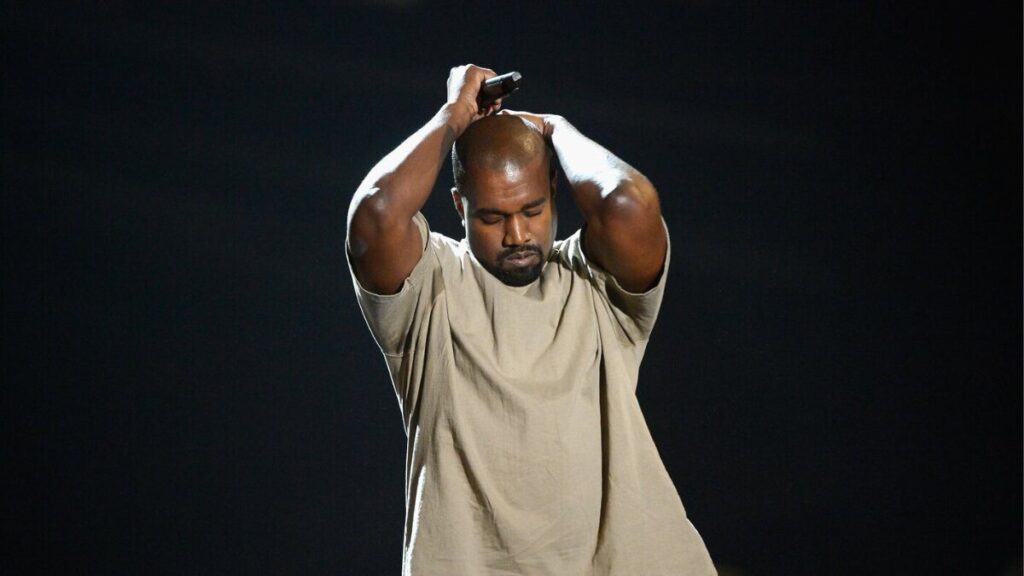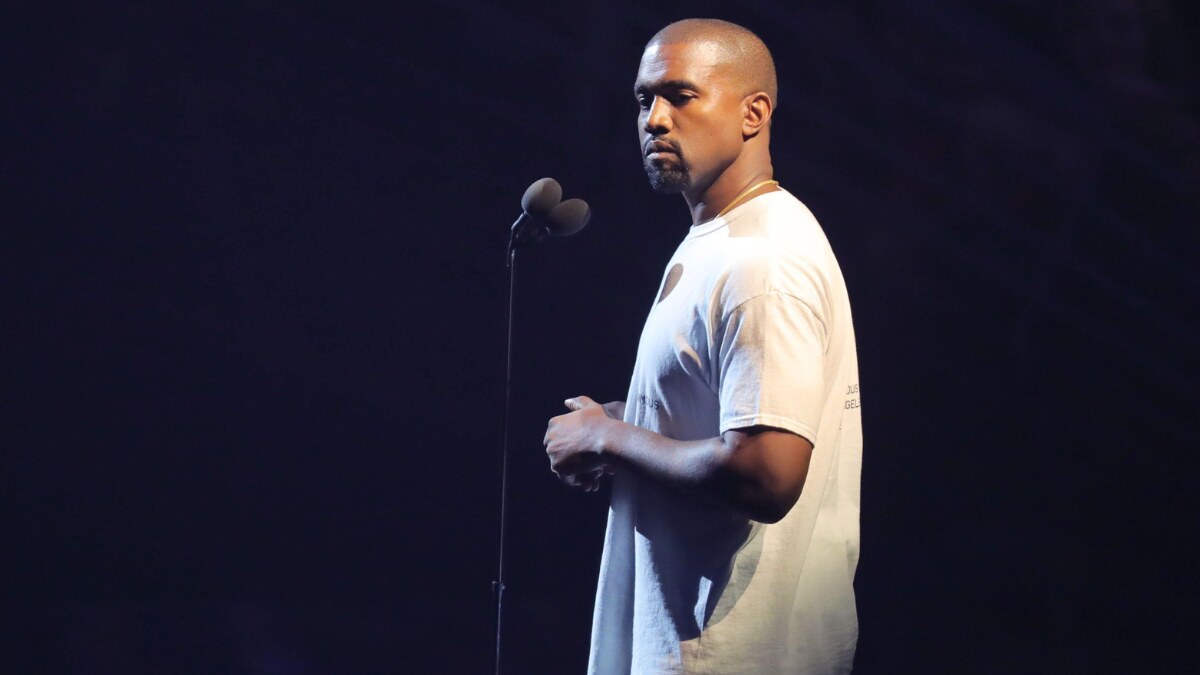It was the night Kanye West stormed the MTV VMA stage in 2009, snatching the microphone mid-sentence to declare that Beyoncé had “one of the best videos of all time.”
In a single, unscripted moment, he ignited headlines, split public opinion, and cemented his role as pop culture’s most unapologetic disruptor.
This was more than celebrity drama — it was a flashpoint in a career defined by breaking rules, bending genres, and forcing uncomfortable conversations.
Kanye West’s influence stretches far beyond the recording studio. In music, he’s dismantled hip-hop conventions and reassembled them with the precision of an architect and the audacity of a provocateur.
In fashion, his Yeezy empire reshaped how streetwear and luxury coexist, blurring the lines between high art and mass-market appeal.
And in public discourse, his unfiltered presence — from political statements to Twitter tirades — sparks cultural debates that ripple across industries.
The controversy surrounding Kanye West isn’t incidental; it’s a byproduct of his refusal to fit neatly into expectations.
This is not just a story about a musician but about the power of cultural disruption itself — the art of provoking, polarizing, and ultimately transforming the way we see the world.
The Disruptor’s DNA — How Kanye West Redefined Celebrity Power
Kanye West doesn’t just live in the spotlight — he engineers it. Every headline, every shocking quote, every “did he just say that?” moment feels less like random chaos and more like a deliberate move in a long-running game of cultural chess. His fearlessness isn’t simply about risk-taking; it’s a calculated willingness to say what others won’t, knowing the fallout will keep him at the center of the conversation.
A master of self-mythologizing, Kanye builds his public persona the way an artist builds a body of work — layering stories, symbols, and contradictions until the audience can’t tell where the man ends and the myth begins. “I am Warhol. I am Shakespeare in the flesh,” he once declared, a statement equal parts ego, art manifesto, and media bait.
Then there’s his calculated unpredictability — the trait that keeps both fans and critics glued to the feed. One moment, he’s dropping an album that redefines a genre; the next, he’s making a political appearance that throws the internet into meltdown. This blend of creativity and volatility is what transforms him from just another celebrity into a pop culture architect.
By bending public perception to his will, Kanye redefines what it means to hold power in the entertainment industry. He isn’t merely playing the fame game — he’s rewriting the rules so the game plays him.
Soundwaves That Shook the System — Musical Reinvention Across Eras
From Backpack Rapper to Genre-Bender
When The College Dropout hit in 2004, it felt like a plot twist in the story of hip-hop evolution. At a time when mainstream rap was dominated by tales of street survival and hypermasculine bravado, Kanye West arrived in pink polos and a Louis Vuitton backpack, rapping about student loans, family, faith, and the awkwardness of chasing dreams.
This debut didn’t just expand the Kanye discography — it expanded the genre’s emotional vocabulary. Tracks like “All Falls Down” and “Jesus Walks” blended humor with sharp social commentary, proving you could be introspective and still move the crowd. His production style, rooted in soulful samples and layered arrangements, brought a warmth and musical innovation that contrasted sharply with the hard-edged beats of the era.
It mattered because it cracked open the door for a new kind of hip-hop protagonist: flawed, vulnerable, and unafraid to be himself.
The 808s Effect and the Birth of a New Sound
When 808s & Heartbreak dropped in 2008, it stunned listeners expecting another soul-sample-laced Kanye record. Instead, they got icy synths, minimalist drums, and heavy auto-tune innovation — a bold leap into experimental rap territory. The album’s raw themes of grief, heartbreak, and alienation were delivered in a restrained, almost robotic vocal style, making the emotion hit even harder.
Initially polarizing, 808s became a genre-shifting moment. What some dismissed as too melancholy or unorthodox quickly proved to be a blueprint for a new wave of artists. Drake’s confessional verses, Kid Cudi’s moody melodies, and The Weeknd’s dark R&B atmospheres all trace a lineage back to this record.
By stripping away hip-hop’s usual armor and embracing emotional vulnerability, Kanye didn’t just reinvent his sound — he rewrote the possibilities of what rap could feel like.
Yeezus and the Aesthetics of Aggression
When Yeezus landed in 2013, it was less an album release and more a sonic detonation. Gone were the lush orchestrations and soulful warmth of earlier records; in their place came industrial beats, jagged synths, and minimalist structures that bordered on abrasive. This was avant-garde hip-hop stripped to its rawest edges — a deliberate rejection of commercial polish.
For an artist at the height of fame, such a move was risky. Yeezus was a polarizing album by design, daring listeners to either confront its jagged textures or turn away entirely. But that’s the point: Kanye has long treated discomfort as a catalyst for conversation.
In embracing creative reinvention at the cost of mainstream safety, Kanye proved that cultural impact sometimes demands pushing so far past the expected that you force the audience to redefine what music can be.
Fashion as a Provocation — Building the Yeezy Empire
From Red Carpet Misfit to Style Visionary
In the early 2000s, Kanye’s red carpet looks — pastel polos, shutter shades, oversized blazers — were often dismissed as eccentric or mismatched. Yet, what critics saw as fashion faux pas were glimpses of a sharp trend-setting instinct. He wasn’t dressing for the moment; he was dressing for the future.
Many of those “odd” choices, from skinny jeans in a baggy-jean era to luxury sneakers with tailored suits, later became staples in mainstream style. For anyone interested in fashion forecasting, Kanye’s evolution proves that innovation often starts at the edges, where risk-taking looks strange until the rest of the world catches up. In hindsight, the misfit was already a visionary — just operating a few seasons ahead of everyone else.
Yeezy’s Streetwear Revolution
With Yeezy, Kanye West didn’t just launch a sneaker line — he reshaped streetwear culture itself. By merging the prestige of luxury fashion with the comfort and accessibility of streetwear, he blurred boundaries that once kept high-end and casual style worlds apart.
The Adidas partnership was the catalyst, turning Kanye from celebrity designer into a bona fide fashion disruptor. Limited-edition Yeezy drops sparked global hype, resale markets boomed, and other brands scrambled to replicate the mix of scarcity, status, and wearability.
More than a product line, Yeezy became a cultural statement: that sneakers could be as coveted as couture, and that streetwear deserved a seat at fashion’s most exclusive table. The industry hasn’t been the same since.
The Luxury Disruptor
Kanye West has long challenged the gatekeeping of high fashion, openly criticizing an industry that often prizes exclusivity over creativity. His approach to luxury fashion innovation mirrors the design rebellion seen in figures like Alexander McQueen, who fused drama with accessibility, and Virgil Abloh, who brought streetwear into couture spaces.
Through Yeezy, Kanye has pushed for inclusivity in fashion — not just in who wears it, but in whose stories are told on the runway. His minimalist designs and neutral palettes reject traditional notions of luxury as flashy or unattainable, instead reframing it as wearable art for everyone. In doing so, he’s positioned himself not just as a fashion disruptor, but as an architect of a more open and boundary-breaking style culture.
Public Persona as Performance Art
The Microphone Moments That Changed Headlines
Kanye West’s most infamous public moments — from the 2009 MTV VMAs mic grab to his MAGA hat photo-op in the Oval Office to his unscripted rants on Saturday Night Live — are often remembered as pure controversy. But through another lens, they read more like performance art.
Each instance disrupted the expected flow of a highly controlled media event, injecting unpredictability into spaces designed for polish. The VMA interruption reframed the awards show as a battleground for artistic recognition. The MAGA hat’s appearance blurred the lines between political statement and pop culture spectacle. His SNL speeches turned a comedy stage into an unscripted manifesto.
Were these moments spontaneous flashes of personality, or carefully chosen provocations designed to dominate headlines? In Kanye’s world, the answer might be both — a calculated chaos that keeps the audience questioning his intent as much as his message.
Social Media as a Stage
Kanye West’s Twitter feed has often felt less like casual posting and more like a live performance — a place where cultural interventions unfold in real time. One day, he’s dropping philosophical one-liners; the next, he’s airing private disputes or announcing surprise album releases.
This unpredictability blurs the line between personal expression and brand-building. Each tweet fuels both fascination and frustration, becoming part of his broader public image strategy. In the digital age, where celebrity scandals can overshadow artistry, Kanye uses social media as a controlled burn — letting certain controversies flare up to keep himself at the center of conversation.
It’s a form of media manipulation that feels impulsive but often has a calculated undercurrent. Whether he’s promoting music, sparking debate, or simply playing with public perception, Kanye treats Twitter not as an afterthought, but as a main stage in his ongoing cultural theater.
Disruption in Context — How Kanye Compares to Other Cultural Mavericks
The Bowie Parallel
Like David Bowie before him, Kanye West has built a career on relentless reinvention. Both artists treat each new era as an opportunity to shed skin — musically, visually, and personally — refusing to let the public define them for long.
Bowie’s chameleonic shifts from Ziggy Stardust to the Thin White Duke mirror Kanye’s transformations, from soulful backpack rapper to the abrasive minimalism of Yeezus to the gospel grandeur of Jesus Is King. Each pivot carries risk, potentially alienating fans, yet both artists leveraged that risk as fuel for longevity.
Crucially, they shared a mastery of image control, crafting personas as carefully as albums. In doing so, Bowie and Kanye proved that in pop culture, reinvention isn’t just survival — it’s the very engine of influence.
Warhol’s Influence
Andy Warhol turned everyday objects and celebrity faces into high art, collapsing the boundary between commerce and creativity. Kanye West channels that same pop art ethos in how he presents himself — as both artist and artwork.
Like Warhol, Kanye understands the power of repetition, iconography, and spectacle. His album covers, Yeezy campaigns, and headline-making stunts often feel less like isolated moments and more like curated exhibits in an ongoing gallery of his life.
Both see fame not as a byproduct of art, but as a medium in itself — something to mold, provoke, and reframe. In this sense, Kanye’s self-presentation is Warholian: a living, evolving installation where the persona is as much the masterpiece as the music or fashion it creates.
Steve Jobs of Pop Culture?
Kanye West’s approach to creativity often mirrors the playbook of Steve Jobs — not just in what he makes, but in how he unveils it. Like Jobs, Kanye treats product launches as cultural events, whether it’s a new Yeezy drop, an album premiere in a stadium, or a fashion show streamed worldwide.
His mastery of narrative control ensures these moments feel less like marketing and more like milestones. Behind it is a form of design thinking that extends beyond sneakers or songs, encompassing the full experience — anticipation, presentation, and cultural conversation.
Both men disrupted their industries by refusing to separate art from commerce. In that sense, Kanye belongs in the same category: not simply a creator, but a visionary who redefines how products — and ideas — enter the world.
My Encounter with the Kanye Phenomenon
The first time I heard My Beautiful Dark Twisted Fantasy, it wasn’t just music playing through my headphones — it felt like a cinematic experience unfolding in my living room. The opening notes of “Dark Fantasy” hit like the curtain rising on an opera I didn’t know I’d bought tickets for. Every track was oversized, unapologetic, dripping with ambition.
I remember pausing halfway through “Runaway,” letting the piano notes hang in the air. It was indulgent, self-aware, and yet so vulnerable that it caught me off guard. I couldn’t decide if Kanye was baring his soul or building a monument to his ego — maybe both. That tension was intoxicating.
Weeks later, I lined up outside a boutique for a Yeezy sneaker drop. It wasn’t just about the shoes; it was about being part of the chaos Kanye orchestrates so well — the sense that you’re stepping into a moment that will be talked about, argued over, and remembered.
Experiencing Kanye in real time, whether through music or fashion, feels like standing in the eye of a cultural storm. There’s beauty, noise, and just enough unpredictability to make you wonder if you’re witnessing genius, madness, or the rare magic that happens when the two collide.
The Double-Edged Sword of Provocation
When Disruption Breeds Backlash
Kanye West’s provocations have often propelled him forward — but not without cost. The 2009 MTV VMA interruption earned him global notoriety, but also led to industry backlash and a temporary retreat from public life. His public feuds with fellow artists, from Taylor Swift to Drake, have sometimes overshadowed his creative output, turning collaborations into cold wars.

The MAGA hat era alienated swaths of his fan base and strained relationships within the music community, sparking debates over whether his provocations were political statements or publicity gambits gone wrong.
These moments raise the question: Does provocation always pay off? In Kanye’s case, it often secures attention, but the goodwill lost can be harder to recover. The gamble is that in pushing boundaries, you risk pushing people away — and not everyone comes back once the storm passes.
The Resilience Factor
Kanye West’s career proves that resilience in the public eye isn’t just about surviving controversy — it’s about rewriting the story afterward. Time and again, he’s turned moments of backlash into platforms for reinvention. After the VMA fallout, he returned with My Beautiful Dark Twisted Fantasy, an album hailed as a masterpiece. Following the divisive Yeezus era, he pivoted to the soulful gospel of Jesus Is King, reframing his public image entirely.
This ability to regain relevance comes from a mastery of narrative control. Kanye doesn’t wait for the media to define his next chapter; he authors it himself, often through bold creative shifts or high-profile launches. It’s brand resilience at its most visible — a cycle of provocation, fallout, and redemption that keeps him culturally indispensable, even to those who once swore they’d tuned out.
Legacy in Motion — Will the World Catch Up or Move On?
Kanye West’s legacy is still being written, and like much of his career, it’s likely to resist neat categorization. Some will remember him as a misunderstood genius — a visionary whose cultural footprint spanned music, fashion, and the very mechanics of celebrity. Others will frame him as a provocateur who pushed too far, letting controversy at times eclipse his creative legacy.
History has a way of reframing the bold. What feels abrasive in the present can, with distance, become the defining mark of a trailblazer. In pop culture history, figures who disrupt as radically as Kanye often oscillate between reverence and rejection before their impact settles into perspective.
Whether the world ultimately catches up to him or moves on, one truth remains: disruption is both an art and a gamble. Kanye has played that game relentlessly — and the final verdict on his place in the cultural canon will be as unpredictable as the man himself.
Nishant Wagh is the founder of The Graval and a seasoned SEO and content strategist with over 15 years of experience. He writes with a focus on digital influence, authority, and long-term search visibility.





5 thoughts on “Kanye West and the Power of Cultural Disruption: Music, Fashion, and the Art of Provocation”